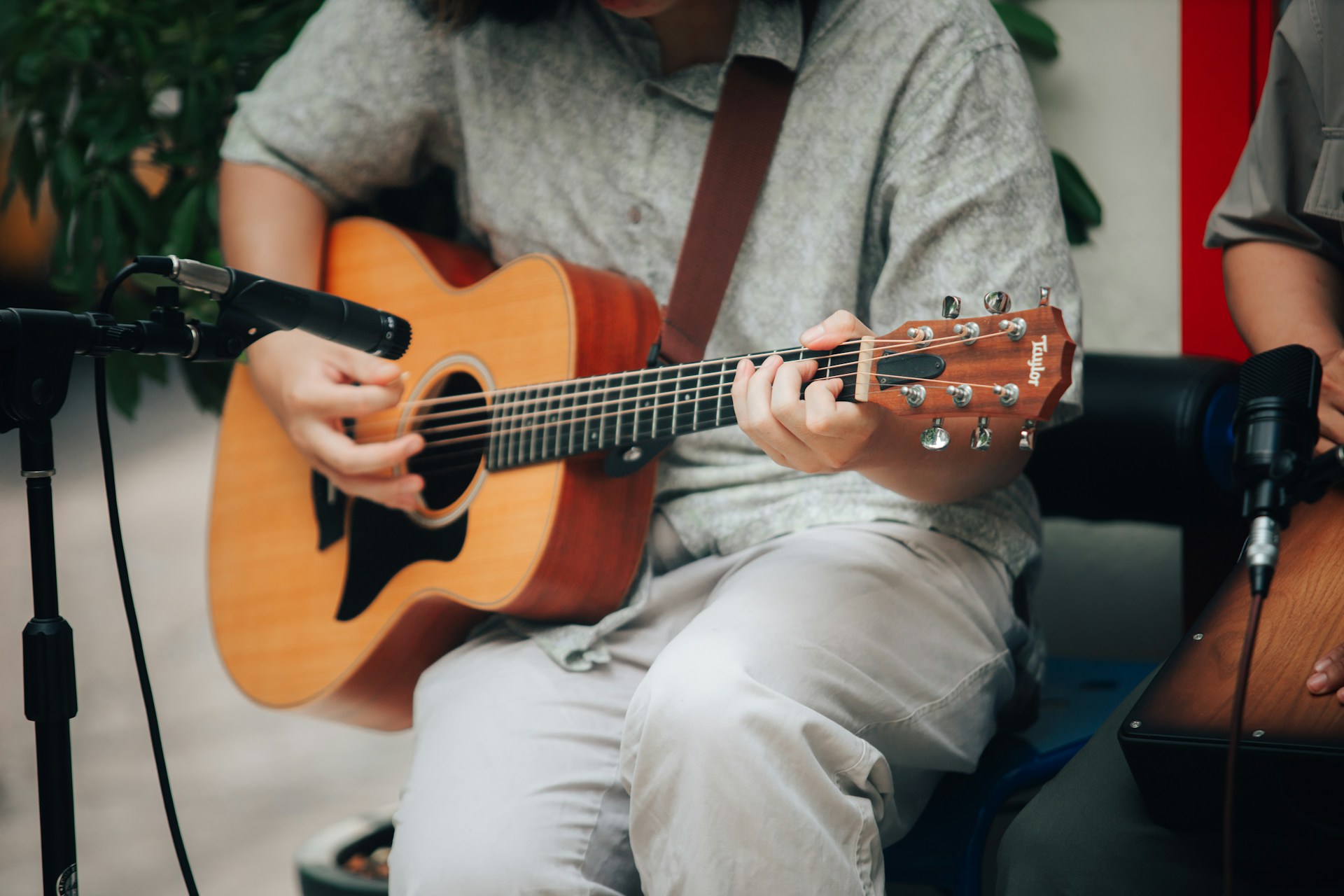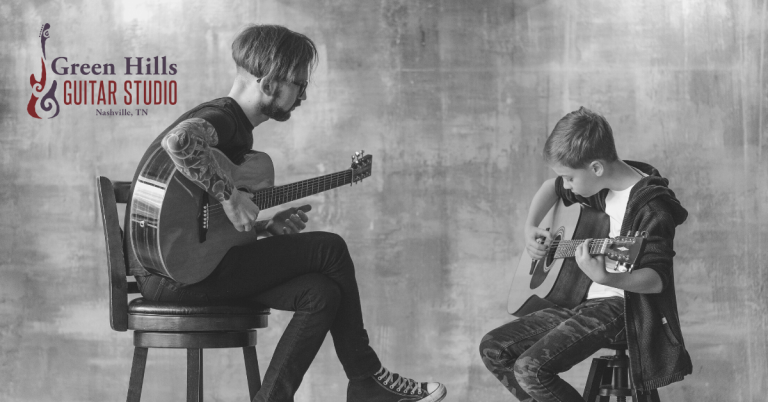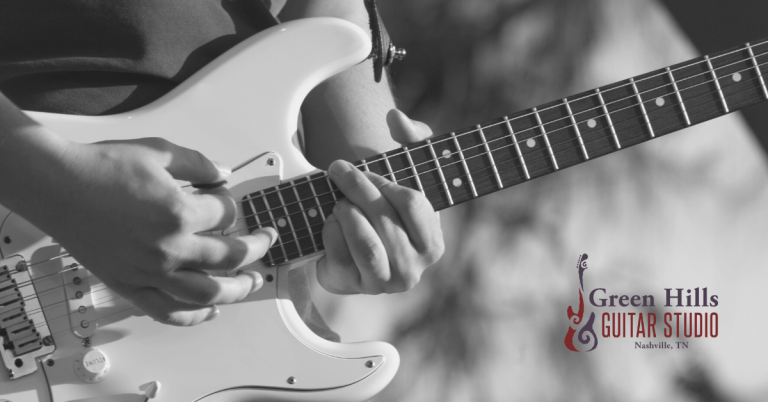Creative Songwriting on Guitar: 16 Practical Tips
If you play guitar and dream of writing your own songs but don’t know how to begin, you’re not alone. That space between playing chords and creating something original can feel huge and even intimidating. But creative songwriting isn’t about being a genius. It’s about having a process you can trust.
The good news is, once you put your hands on the guitar and give yourself something simple to explore, creativity often follows. Whether you’re writing your first song or trying to break out of a rut, here are 16 practical songwriting tips from a guitar teacher who’s helped hundreds of students in Nashville and online turn ideas into songs they’re proud of.
Part 1: Start Small, Stay Playful
1. Write a Song Using Only Three Chords
Limiting your options can actually increase your creativity. Use a classic progression like G–C–D or A–D–E. Focus on rhythm, feel, and melody. The Beatles, Tom Petty, and Taylor Swift all wrote massive hits with just three simple cowboy chords.
2. Build a Song Around a Riff
Instead of starting with a full chord progression, write a short riff—a little hook or groove—that feels good under your fingers. Loop it, build around it, and see what vocal or melodic ideas follow.
3. Use a Single Strumming Pattern the Whole Time
Experimenting with guitar strumming patterns keeps your rhythm consistent and forces you to be more creative with melody and dynamics. Try down–down–up–up–down–up and build from there.
4. Try Writing the Melody First
We often default to building from chords, but sometimes the best songs start with a sung idea. Try humming a line before playing anything. Then find the chords that support it.
Part 2: Structure Is Your Friend
5. Decide on a Song Form Early
Do you want Verse–Chorus–Verse–Chorus–Bridge–Chorus? Or something simpler like Verse–Chorus–Verse–Chorus? Choose a shape. Having a roadmap frees up your creativity within the form.
6. Repeat Something on Purpose
Repetition gives your listener something to grab onto. It might be a chord progression, a rhythm pattern, or a lyric phrase. Find something worth repeating—and lean into it.
7. Write the Chorus First
Your chorus is the emotional center of your song. Starting there helps you define what the song is about. Once you have that, the verses become easier to shape.
Part 3: Add Color With Harmony
8. Try a Major–Minor Swap
If you’re in a major key, try swapping the I chord (like C) for its minor (Cm) in one section. That shift can add a fresh emotional turn.
9. Use One “Surprise” Chord
Throw in a chord that doesn’t “belong” but still sounds good. For example, add a bVII (like Bb in the key of C) to break up predictability. It can make your song feel more personal or cinematic.
10. Use a Capo to Change the Mood
Capos can shift the tone of familiar chords. G with a capo on the 5th fret sounds very different than open G. Try moving the capo and playing familiar shapes to explore new textures.
Part 4: Connect Guitar and Lyrics
11. Leave Space for the Vocal
Don’t overplay. If your guitar part fills every second, your voice won’t have room to breathe. Try palm muting or simple arpeggios under your verse. Save strumming for the chorus lift.
12. Start With One Lyric Line
Instead of trying to write a full verse, start with one line that feels emotionally true. Build around it like scaffolding. One honest line is more powerful than a clever verse that says nothing.
13. Speak the Lyrics in Rhythm First
Say the words out loud in rhythm before trying to sing them. This helps you write lines that sound natural and flow with the music. It also improves phrasing and breath control.
Part 5: Break the Rules on Purpose
14. Write a Song in Open Tuning
Change your tuning—try DADGAD or Open G—and let your hands explore. You’ll find new shapes and voicings that can lead to unusual and beautiful chord progressions.
15. Write a Song With No Chorus
Challenge yourself to write a story or mood piece that doesn’t need a big singalong hook. Great examples include “Blackbird” by The Beatles or “Fast Car” by Tracy Chapman.
16. Write in a Key You Don’t Normally Use
If you always write in G or C, try F# or Eb. Even if you use a capo or transpose later, this will force you out of muscle memory and into fresh territory.
Bonus Tip: Capture Everything
Always have a way to record your ideas. Use your phone’s voice memo app or a loop pedal. Don’t trust your memory. That little riff you played once and forgot? It could’ve been the start of your favorite song.
Wrap-Up: Songwriting Is a Skill You Can Learn
Writing songs on guitar isn’t just for “naturals.” Like anything else, it’s a skill—and the more you do it, the easier it becomes.
Try one or two tips from this list today. Don’t wait until you “feel ready.” Just pick up your guitar, play something simple, and follow your curiosity.
And remember: your first few songs don’t need to be perfect. They just need to exist.
Want to Get Better at Writing Songs?
At Green Hills Guitar Studio, we help guitarists not just play—but create.
Whether you’re a beginner writing your first song or an experienced player refining your voice, our songwriting and guitar lessons are tailored to meet you where you are—and help you grow.
Start your songwriting journey with us today. In-person and online lessons available.






